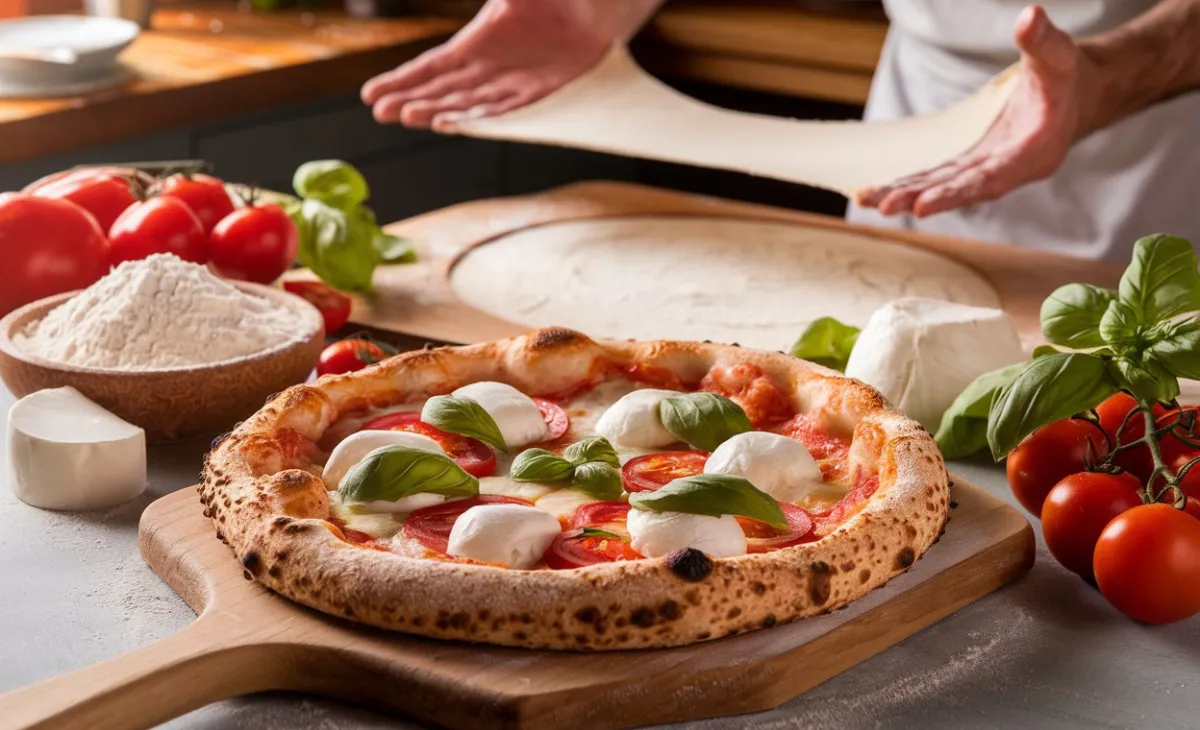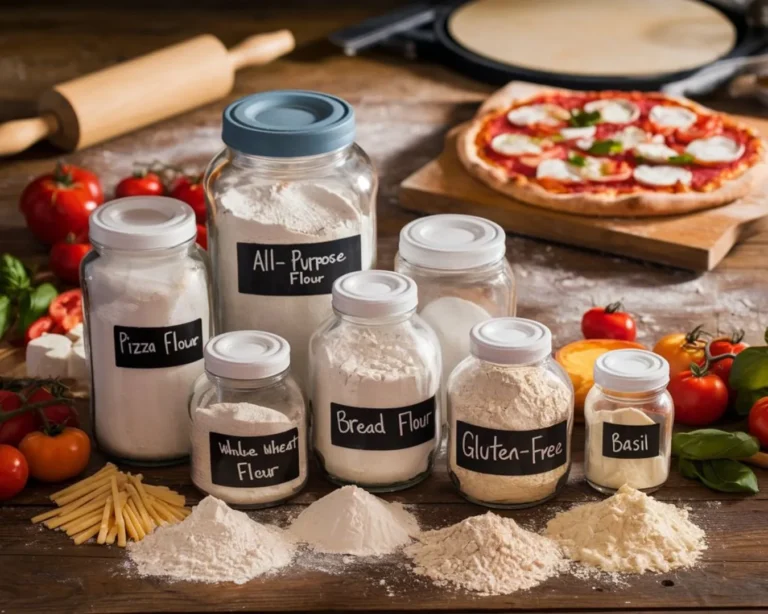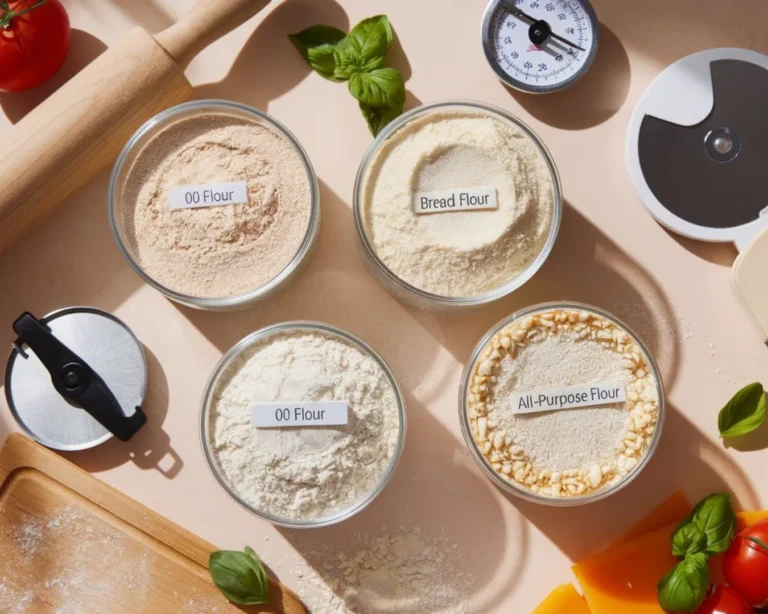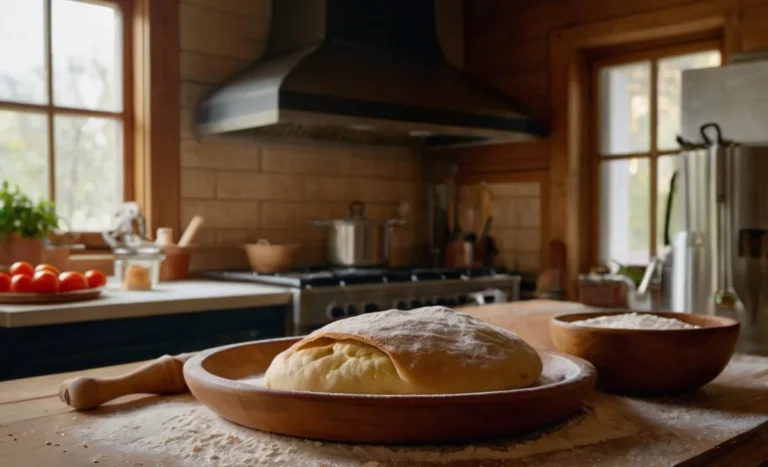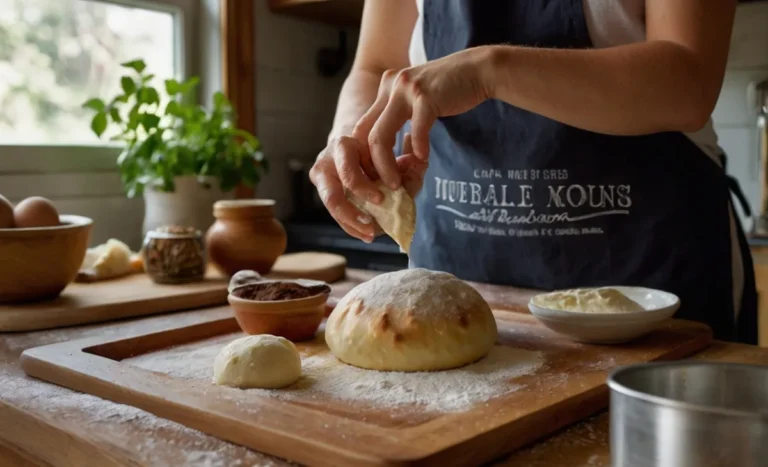Pizza Flour Types Explained: Which One is Right for Your Recipe?
Understanding Pizza Flour: The Basics
When it comes to crafting the perfect pizza, understanding pizza flour is essential. Pizza flour is not just any flour; it plays a crucial role in determining the texture and flavor of your crust. Each type of pizza flour has unique characteristics that can impact your baking experience. Therefore, knowing the basics will help you make informed choices for your recipes.
Pizza flour is typically categorized based on its protein content. This content influences how the dough behaves during mixing, kneading, and baking. Generally, higher protein flours create a chewier crust, while lower protein flours yield a softer texture. Additionally, the type of pizza you want to create—Neapolitan, New York-style, or Chicago deep-dish—will guide your flour selection. Transitioning between these styles requires an understanding of how flour affects the final product.
Another factor to consider is the milling process. Flour can be finely or coarsely milled, affecting the dough’s absorption and gluten development. For instance, 00 flour is finely milled and is often preferred for traditional Neapolitan pizza due to its smooth texture. In contrast, bread flour, which is coarsely milled, is ideal for creating a hearty, thick crust. By recognizing these distinctions, you can select the right flour for your pizza style.
Finally, experimenting with different pizza flours can enhance your culinary skills. As you gain more experience, you’ll discover which flour yields the best results for your taste preferences. Whether you opt for all-purpose flour for convenience or specialty flours for authenticity, understanding pizza flour is the first step to achieving pizza perfection. Transitioning your knowledge into practice will lead to delicious homemade pizzas that impress friends and family alike.
Exploring Different Types of Pizza Flour
When it comes to making delicious pizzas, the type of pizza flour you choose can make all the difference. Pizza flour varies in texture, protein content, and milling process, all of which impact the final product. By exploring different types of pizza flour, you can enhance your pizza-making skills and create crusts that perfectly suit your recipes.
One of the most popular options is 00 flour, which originates from Italy. This finely milled flour is ideal for Neapolitan-style pizzas, providing a soft and chewy crust. With a high protein content, 00 flour promotes gluten development, resulting in a dough that can be stretched easily. Consequently, this flour is favored by many professional pizzerias for its ability to achieve that authentic Italian texture.
Another common choice is bread flour, which contains a higher protein content than all-purpose flour. This type of pizza flour is perfect for New York-style pizza, giving the crust a nice chewiness. Additionally, the increased protein helps the dough rise well, creating a light and airy structure. If you prefer a thicker, heartier crust, bread flour is an excellent option to consider.
Lastly, all-purpose flour is a versatile choice for home bakers. It has a moderate protein content, making it suitable for various pizza styles. While it may not provide the same texture as specialty flours, all-purpose flour is convenient and widely available. For beginners, starting with all-purpose flour allows for easy experimentation without feeling overwhelmed. As you explore different types of pizza flour, you will discover which one is right for your recipes and preferences.
How Protein Content Affects Dough Texture
Understanding how protein content affects dough texture is essential when choosing the right pizza flour. Protein plays a crucial role in gluten formation, which ultimately determines the structure and texture of your pizza crust. Different types of pizza flour contain varying protein levels, impacting how your dough behaves during mixing, fermentation, and baking.
For instance, high-protein flours like bread flour typically contain 12-14% protein. This high protein content creates a strong gluten network, resulting in a chewy and elastic dough. As a result, pizzas made with high-protein flour tend to have a sturdy crust that holds toppings well. Consequently, this type of flour is ideal for styles like New York and Chicago deep-dish pizza, where a firmer structure is desired.
In contrast, lower-protein flours, such as cake flour or all-purpose flour, generally contain 8-11% protein. These flours produce a softer, more tender dough, which is perfect for lighter crusts like Neapolitan pizza. This softer texture allows for a delicate bite, making it easier to achieve that authentic Italian pizza experience. However, it may not hold up as well under heavier toppings, so it’s essential to consider your recipe.
Ultimately, knowing how protein content affects dough texture can guide your flour choices for different pizza styles. By selecting the right pizza flour based on protein levels, you can achieve the desired texture and flavor in your crust. As you experiment with various flours, you’ll discover how these factors influence your pizza-making success.
Comparing All-Purpose, Bread, and 00 Flour
When exploring the world of pizza flour, understanding the differences between all-purpose, bread, and 00 flour is essential. Each type offers unique characteristics that can significantly impact your pizza’s crust. By knowing their strengths and weaknesses, you can make informed choices for your pizza recipes. This knowledge is crucial for achieving the desired texture and flavor.
All-purpose flour is a versatile option that can work well for various recipes. With a protein content of around 10-12%, it provides a good balance between chewiness and tenderness. Consequently, all-purpose flour can create a satisfactory pizza crust, but it may not yield the same elasticity as higher-protein options. This flour is perfect for those looking for convenience and consistency, especially if you bake pizza occasionally.
On the other hand, bread flour contains a higher protein content, typically ranging from 12-14%. This flour’s strength allows for excellent gluten development, which creates a chewy and robust crust. As a result, bread flour is ideal for pizza styles that require a firmer base, such as New York or Sicilian pizza. When using bread flour, you’ll notice that your dough is more elastic and can handle heavier toppings without becoming soggy.
Lastly, 00 flour is a specialty option popular in Italian pizza-making. With a fine texture and a protein content of around 11-13%, it allows for excellent stretchability while maintaining a soft crumb. This flour is particularly well-suited for Neapolitan-style pizzas, which require a delicate balance between crispness and chewiness. By understanding these differences among pizza flour types, you can select the best option for your recipe and achieve the perfect crust every time.
Choosing the Right Flour for Various Pizza Styles
When it comes to making pizza, choosing the right flour is crucial for achieving the perfect crust. The type of pizza flour you select can significantly influence the texture and flavor of your final product. Different pizza styles require specific flour types to enhance their unique characteristics. Whether you are aiming for a chewy New York slice, a crispy Roman pizza, or a soft Neapolitan pie, understanding your options is key. In this guide, we’ll explore how to choose the right flour for various pizza styles, ensuring that your homemade pizzas are a hit!
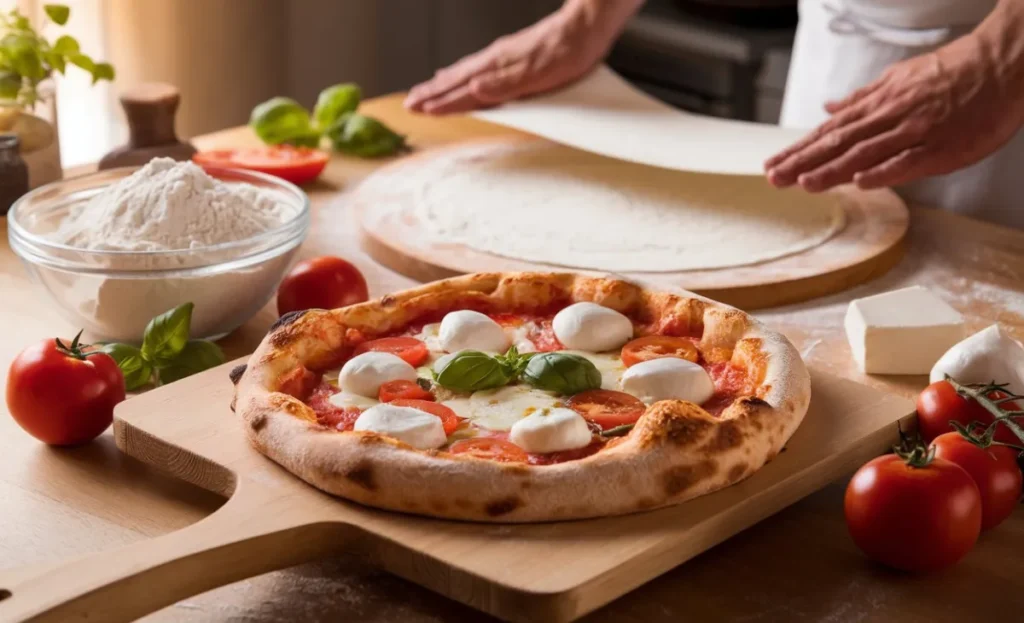
Ingredients
- For New York-Style Pizza:
- 4 cups bread flour (high protein content)
- 1 ½ cups warm water (around 110°F/43°C)
- 1 packet (2 ¼ teaspoons) active dry yeast
- 2 tablespoons olive oil
- 1 tablespoon sugar
- 2 teaspoons salt
- For Neapolitan-Style Pizza:
- 3 cups 00 flour (fine texture)
- 1 ¼ cups warm water (around 110°F/43°C)
- 1 packet (2 ¼ teaspoons) active dry yeast
- 1 tablespoon salt
- 1 teaspoon sugar (optional)
- For Roman-Style Pizza:
- 3 ½ cups all-purpose flour
- 1 ½ cups warm water (around 110°F/43°C)
- 1 packet (2 ¼ teaspoons) active dry yeast
- 3 tablespoons olive oil
- 2 teaspoons salt
Step-by-Step Instructions
1. Prepare the Dough:
- In a bowl, combine warm water, sugar, and yeast. Let it sit for about 5-10 minutes until foamy.
- In a separate large mixing bowl, combine the flour and salt. Make a well in the center and pour in the yeast mixture along with olive oil (for New York and Roman styles) or skip olive oil for Neapolitan style.
2. Mix and Knead:
- Stir until a rough dough forms. Transfer the dough onto a floured surface and knead for about 8-10 minutes until smooth and elastic. If using 00 flour, knead gently to maintain its fine texture.
3. First Rise:
- Place the dough in a lightly greased bowl, cover with a damp cloth, and let it rise in a warm area until doubled in size. This typically takes about 1-2 hours, depending on the flour and room temperature.
4. Shape and Bake:
- After rising, punch down the dough to release the air. Divide it into smaller portions (depending on your desired pizza size).
- Roll out or stretch each portion into your desired shape. Add toppings and preheat your oven to its highest setting (about 475-500°F/245-260°C).
- Bake for 10-15 minutes or until the crust is golden and the cheese is bubbly.
By selecting the appropriate pizza flour for each style, you’ll create mouthwatering pizzas that impress your family and friends. So, whether you’re making a classic Neapolitan or a hearty New York slice, the right flour makes all the difference!
Common Mistakes to Avoid with Pizza Flour
When it comes to baking delicious pizzas, understanding pizza flour is crucial. However, many home cooks make common mistakes that can affect their pizza’s final outcome. By recognizing these pitfalls, you can ensure a perfect crust every time. Let’s explore some common mistakes to avoid with pizza flour, so you can elevate your pizza-making skills.
One major mistake is using the wrong type of pizza flour. Different pizza styles require specific flours to achieve the desired texture and flavor. For instance, 00 flour is ideal for Neapolitan pizza, while bread flour works best for a chewy New York-style crust. Transitioning between these flours without understanding their properties can lead to disappointing results. Therefore, always choose the right flour based on your pizza style to ensure optimal results.
Another frequent error is neglecting to measure your pizza flour accurately. Using too much or too little flour can alter your dough’s consistency. Too much flour can lead to a dry, crumbly crust, while too little can result in a soggy mess. To avoid this, use a kitchen scale for precise measurements. Additionally, sift your flour to aerate it before measuring. This simple step can make a significant difference in your dough’s texture.
Lastly, many people overlook the importance of resting the dough. Failing to let your dough rest can prevent gluten from relaxing, making it challenging to shape. Moreover, under-rested dough may shrink back when stretched, leading to an uneven crust. To achieve the best results, allow your dough to rest for at least 30 minutes after kneading. This extra time not only improves the dough’s elasticity but also enhances its flavor. By avoiding these common mistakes, you can make fantastic pizza at home every time!
Tips for Storing and Handling Your Pizza Flour
Storing and handling pizza flour correctly is essential for maintaining its quality and ensuring optimal results in your pizza-making endeavors. Proper storage prevents the flour from absorbing moisture and odors, which can negatively affect its performance. By following a few simple tips, you can keep your pizza flour fresh and ready for delicious homemade pizzas.
First, always store your pizza flour in an airtight container. This helps keep out moisture and pests, preserving the flour’s texture and flavor. Glass jars or food-safe plastic containers work well for this purpose. Additionally, place the container in a cool, dark place, away from direct sunlight. Excessive heat can degrade the flour, reducing its baking potential. For long-term storage, consider keeping your flour in the refrigerator or freezer, as this can significantly extend its shelf life.
Second, when handling pizza flour, be mindful of cross-contamination. Always use clean utensils and measuring cups when scooping flour from the container. This practice helps avoid introducing contaminants that could spoil the flour. Moreover, be cautious about the moisture levels in your kitchen. High humidity can affect the flour’s consistency, so try to keep the flour container sealed when not in use.
Lastly, allow your pizza flour to come to room temperature before using it in your recipes. Cold flour can affect the dough’s ability to rise properly, leading to a denser crust. By letting it sit for about 30 minutes before you start baking, you can ensure better results. Following these tips for storing and handling your pizza flour will help you create amazing pizzas at home, every time.
Pizza Flour 101: Everything You Need to Know for Baking Delicious Pizzas

